SLV: le infinite anime della techno in “Night Echoes”– L’intervista
SLV, al secolo Salvo Castelli, torna su Mutual Rytm con “Night Echoes“. Dopo essere stato uno dei protagonisti dell’ ultimo Various Artist “Federation of Rytm III“, il dj nato in Sicilia ma cresciuto artisticamente a Berlino continua a tracciare la propria evoluzione artistica. Lo fa attraverso un Ep da brivido: un vero e proprio trattato sulle infinite declinazioni della techno, unendo passato e presente, suono analogico e digitale, old school e sound contemporaneo attraverso una tecnica sopraffina ed una spiccata sensibilità artistica.
SLV è la dimostrazione di quanto la Techno sia un’ attitudine: “Night Echoes” è una prova magistrale del pupillo di Soma, che ritaglia una speranza in uno scenario sempre più affollato di copie e omologazione.
Abbiamo voluto farci raccontare l’ispirazione ed il duro lavoro dietro un Ep così ben concepito, riflettere sull’evoluzione della scena elettronica moderna e sulla crisi di Aslice, farci spiegare il suo lavoro come sempre manager e l’ esperienza come Resident per il party Phase 2. Un’ intervista a 360 gradi su un artista capace di interpretare la musica Techno nelle sue innumerevoli ed affascinanti sfumature. Buona lettura!
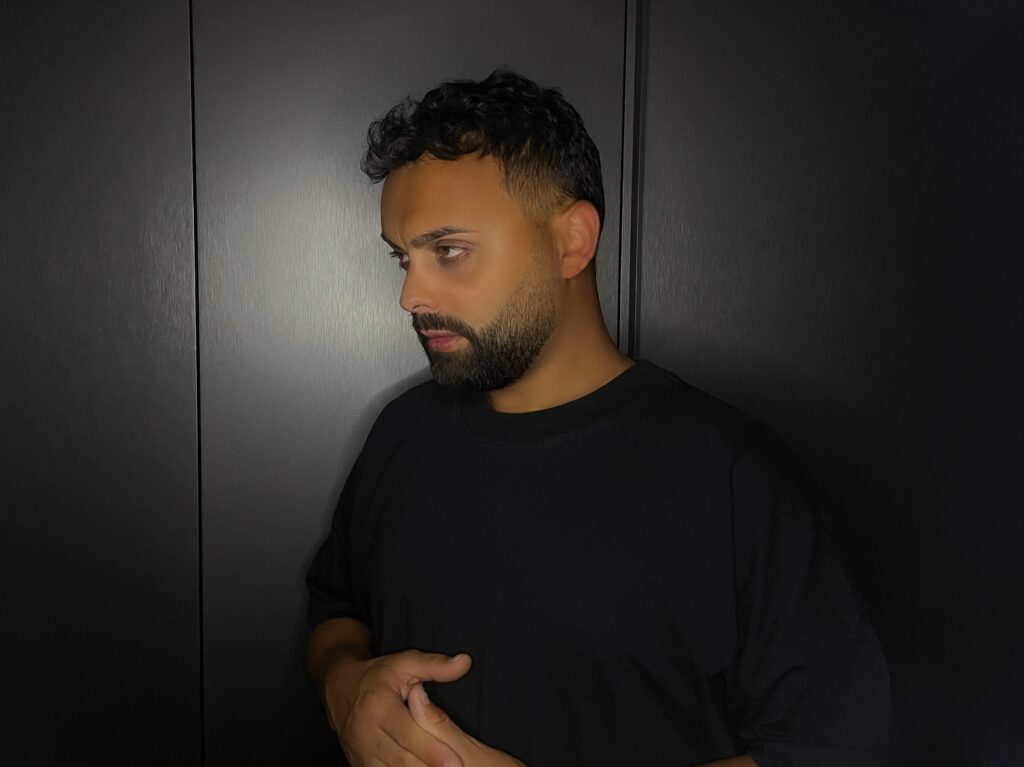
Ciao SLV, bentornato su Parkett vorrei partire chiedendoti come stai e cosa ha rappresentato fino ad adesso questo 2024 per te?
Ciao e grazie mille per l’invito! È sempre un piacere tornare su Parkett. Sto bene, sono in un buon momento sia personale che professionale. Il 2024, finora, è stato un anno di grande crescita per me. Ho avuto l’opportunità di esplorare nuove direzioni artistiche, consolidare alcune collaborazioni e lavorare su progetti che mi hanno permesso di esprimere lati di me che non avevo ancora condiviso. È stato un anno ricco di stimoli creativi, sfide e soddisfazioni.
Sono passati diversi anni dall’ ultima volta che sei stato nostro ospite e senza dubbio il tuo percorso artistico si è arricchito di nuove esperienze. In che maniera ti senti maturato come artista rispetto al passato?
Beh, certamente. Prima di ogni cosa, ho conosciuto meglio me stesso e il mio processo creativo. Se in passato mi sono concentrato maggiormente sulla sperimentazione, ora mi sento più consapevole delle scelte che faccio, sia a livello sonoro che visivo.Inoltre, ho avuto la fortuna di collaborare con artisti e professionisti che mi hanno aperto a nuove prospettive, che mi hanno stimolato a perfezionare la mia visione artistica e a esplorare nuovi territori. Credo di aver acquisito una maggiore padronanza tecnica, ma soprattutto una maturità emotiva che mi permette di esprimere meglio ciò che ho dentro. Oggi, ogni progetto per me ha un significato più profondo e questo mi spinge ad essere più attento al mio modo di dialogare, attraverso la mia arte, con il pubblico.
Una delle tue grandi doti come produttore e dj è senza alcun dubbio una forte versatilità espressiva, che ti ha permesso di esprimerti in maniera distintiva su differenti ambiti sonori: dalla techno ambient a sonorità più industrial. Cosa rappresenta per SLV la versatilità artistica e in che maniera si può riuscire ad essere musicalmente versatili mantenendo la propria identità artistica ben definita?
Grazie per le tue parole! Per me, la versatilità artistica è fondamentale: é ciò che mi permette di esplorare diversi territori sonori senza sentirmi intrappolato in un solo stile. Credo che la capacità di muoversi tra generi, come la techno ambient e le sonorità industriali, sia essenziale per mantenere viva la creatività e continuare a evolversi.E lo faccio mantenendo la mia identità artistica, perché ho trovato il mio “filo conduttore”, la mia impronta.
Nel mio approccio, ci sono degli elementi ricorrenti, sia in termini di atmosfere che di estetica sonora, che mi rappresentano e mi distinguono. È come se ogni progetto che creo, indipendentemente dal genere, fosse parte di un racconto più ampio in continua evoluzione.Essere versatili non significa cambiare completamente forma o identità, piuttosto arricchire ciò che sei con nuove sfumature e influenze, mantenendo tuttavia una coerenza artistica che il pubblico può riconoscere.
Il tuo prossimo Ep “Night Echoes” uscirà su Mutual Rytm, label che aveva ospitato a febbraio la tua traccia “Liminal Space”, in un Various Artist insieme a Blawan, Dax J e Z.I.P.P.O. Come è nato il rapporto con SHDW e perché hai pensato che la label potesse essere la casa giusta per questo progetto artistico?
Conosco Marco SHDW da molti anni e ho sempre apprezzato lo stile musicale che proponeva su Mutual Rytm, che coincideva con quello a cui stavo lavorando anch’io. Dopo aver partecipato al Various Artist di febbraio con la traccia “Liminal Space”, ho deciso di mandargli altra musica e lavorare su un EP completo. MutualRytm mi è sembrata la scelta perfetta per “Night Echoes”, poiché rispecchia la mia visione artistica e offre uno spazio ideale per esprimere il mio suono.
In “Night Echoes” l’ascoltatore viene immerso dentro un viaggio completo all’interno del tuo sound, che viene espresso nelle più differenti sfumature. Nell’era dell’immediatezza musicale quanto è importante concepire un lavoro come un album nella quale dipingere il proprio sound e che tipo di impegno e lavoro in studio richiede?
Concepire un progetto come “Night Echoes” richiede un approccio diverso, più riflessivo. Per me, è fondamentale creare qualcosa che vada oltre il singolo brano, un lavoro che racconti una storia completa e che permetta all’ascoltatore di immergersi profondamente nel mio mondo sonoro. Un EP o un album offrono lo spazio necessario per esplorare tutte le sfumature del proprio sound, senza doversi limitare a esprimere tutto in pochi minuti.Il lavoro in studio per un progetto del genere è molto intenso.
Ogni traccia deve trovare il suo posto all’interno del racconto generale, mantenendo coerenza ma offrendo anche variazioni che mantengano viva l’attenzione dell’ascoltatore. Richiede un equilibrio tra la sperimentazione e la struttura, tempo dedicato alla ricerca dei giusti suoni, alle atmosfere e al flusso generale del progetto. “Night Echoes” è il risultato di questo processo, un viaggio sonoro frutto di tanta dedizione.
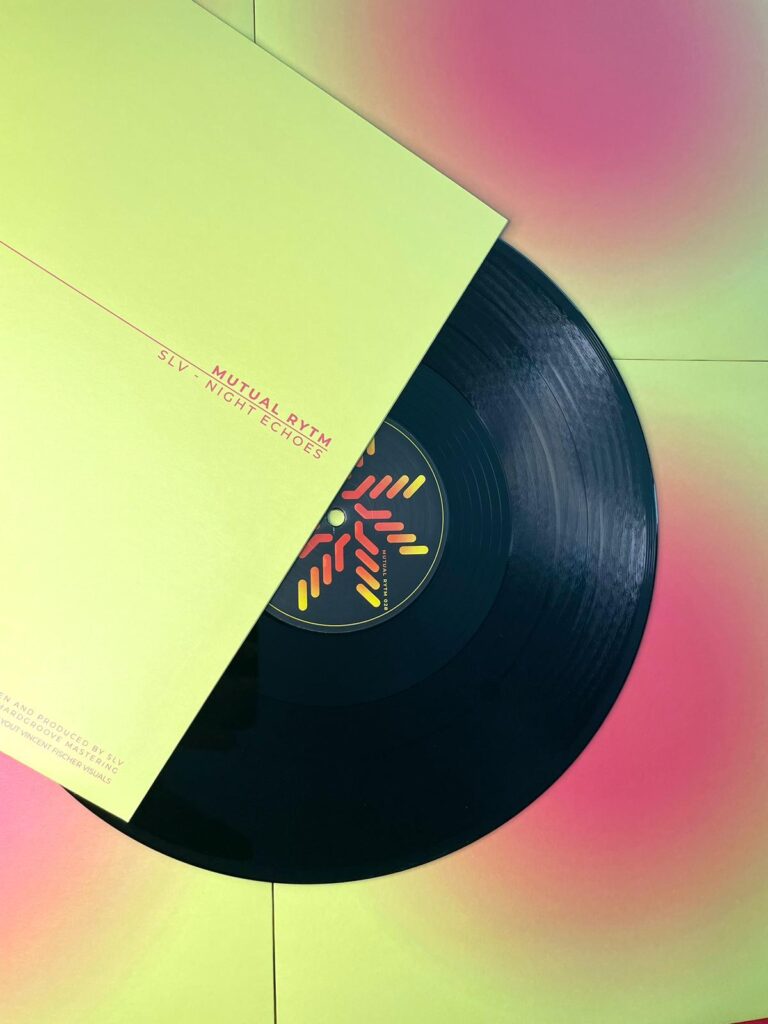
L’Ep inizia con un’idea di techno più cruda e dritta per poi, in tracce come “Void” e “Elastik Pho”, ispirarsi maggiormente in sound old school detroitiano. Quanto il patrimonio della techno di Detroit fa parte del tuo background sonoro e come riesci a dare contemporaneità a questo sound senza ricadere nel citazionismo stilistico?
Il patrimonio della techno di Detroit è una parte fondamentale del mio background sonoro. La sua capacità di esprimere emozioni e raccontare storie attraverso i suoni mi ha sempre affascinato.Per attualizzare questo sound, reinterpreto elementi classici con nuove idee e tecnologie, andando oltre la semplice riproduzione di sonorità tradizionali, creando un ponte tra il passato e il presente. Le tracce come “Void” ed “Elastik Pho” riflettono questo approccio, mescolano l’essenza della techno con innovazioni sonore che rendono il tutto fresco e attuale.
La traccia che chiude l’Ep “Persistence of Memory” chiude il cerchio ricollegandosi all’inizio dell’ Ep ma arricchendo le sonorità più dure delle prime track con uno stile dub techno ed elementi glitch. Che tipo di lavoro hai fatto con i sintetizzatori e i campioni per creare una trama sonora che valorizzasse sia la parte ritmica che i suoni?
In “Persistence of Memory” ho utilizzato diversi sintetizzatori, uno in particolare, il Pro3 della Prophet, per costruire una trama sonora ricca, esplorando diverse modulazioni e timbri.Inoltre, ho lavorato con campioni per arricchire la parte ritmica, mantenendo un equilibrio tra i vari elementi. Il risultato è una traccia che chiude l’EP in modo complesso e immersivo, invitando l’ascoltatore a riflettere sul mio universo musicale.
Ultimamente stiamo assistendo a una saturazione della scena hard techno, con una commercializzazione di questo genere musicale. Pensi che oggi la scena techno stia assumendo caratteri mainstream e quali sono a tuo modo di vedere i rischi di questa attuale evoluzione?
Sì, è innegabile che la scena techno, e in particolare l’hard techno, stia diventando sempre più mainstream. Questa evoluzione ha portato a una maggiore visibilità e a un pubblico più ampio, il che può essere positivo, ma comporta anche il rischio di perdita dell’autenticità del genere. Più la musica diventa commercializzata e più c’è il rischio che i suoni e le esperienze siano uniformati, perdendo così la diversità e l’innovazione che hanno caratterizzato la techno in passato.
Inoltre, questo può portare a una saturazione di produzioni simili, scenario in cui la qualità artistica viene sacrificata in favore di formule più vendibili.Un altro aspetto da considerare è il modo in cui questa commercializzazione possa influenzare l’esperienza del live e del clubbing. La techno è tradizionalmente legata a spazi underground e a un senso di comunità, la sua evoluzione verso il mainstream potrebbe ridurre la sua capacità di creare un ambiente autentico e immersivo.Tuttavia, credo anche che ci siano artisti e produttori che continueranno a spingere i confini del genere, mantenendo viva l’innovazione e l’autenticità. La sfida sarà quella di trovare un equilibrio tra l’accessibilità e la preservazione dell’essenza della techno.
La chiusura di Aslice è stato un altro tema che pone una riflessione tra la disparità tra giovani producer ed artisti affermati, che non hanno spesso sopportato la piattaforma. Qual era il tuo rapporto con la piattaforma e come la comunità elettronica può trovare a tuo parere dei nuovi modi per supportare gli artisti underground?
Ho trovato nella piattaforma Aslice uno spazio in cui esprimere la mia musica e connettermi con altri artisti e appassionati, ma riconosco che esiste una disparità tra i giovani producer e gli artisti affermati.Per supportare gli artisti underground, la comunità elettronica potrebbe adottare diverse strategie. In primo luogo, è fondamentale creare spazi e opportunità per le nuove voci, come eventi dal vivo, showcase e festival dedicati agli emergenti.
Questi eventi non solo danno visibilità agli artisti, ma anche la possibilità di costruire una rete di contatti e collaborazioni.Inoltre, la promozione attraverso le piattaforme digitali e i social media può essere un grande alleato. Sostenere i giovani artisti condividendo la loro musica e creando una comunità online attiva può contribuire a farli emergere, come appunto stiamo gia facendo da qualche anno con la nostra piattaforma Seedj.Infine, l’importanza del feedback e del sostegno reciproco non può essere sottovalutata. I produttori affermati dovrebbero considerare di offrire mentorship e supporto ai nuovi artisti, condividendo la loro esperienza e conoscenza. In questo modo, possiamo lavorare insieme per mantenere viva l’innovazione e la diversità nella scena elettronica.
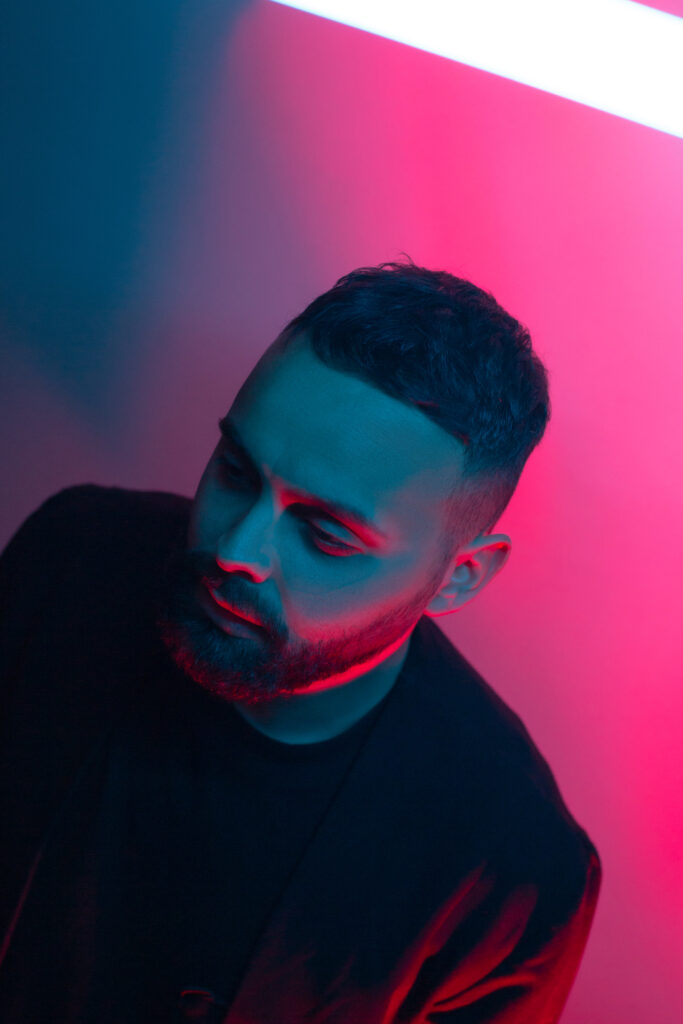
Oltre alla tua attività artistica come dj lavori come sample manager per la piattaforma Seedj e hai realizzato dei pacchetti sample per realtà di spessore come Soma. Che apporto da alla tua carriera questo tipo di lavoro e hai intenzione di portare la tua esperienza in tal campo anche su nuove piattaforme?
Certamente ha un impatto significativo sulla mia carriera. Queste esperienze mi permettono di approfondire la mia comprensione dei suoni e delle texture, arricchendo il mio bagaglio artistico e migliorando le mie capacità di produzione. Creare pacchetti sample mi ha anche insegnato l’importanza della qualità e della versatilità, essenziali per un produttore.Attualmente, sto collaborando con Riemann Kollektion di Florian Meindl, in cui sto rilasciando i miei sample pack, il che mi consente di esplorare nuove sonorità e condividere il mio sound con altri artisti.
Sono poi coinvolto nel progetto 4four con Splice, dove produco suoni che possono essere utilizzati da altri artisti.In futuro, ho intenzione di portare la mia esperienza in questo campo anche su nuove piattaforme, continuando a lavorare su progetti che uniscano la mia passione per la musica alla produzione di suoni di alta qualità. Questo approccio non solo arricchisce la mia carriera, ma può anche contribuire a supportare altri artisti nel loro percorso creativo.
Berlino rappresenta per te il luogo di ispirazione per eccellenza, dove si è evoluto e formato il tuo sound. Ma oggi Berlino è ancora il “Place to be” per un artista?
Berlino ha sicuramente rappresentato un luogo di ispirazione fondamentale per la mia musica, e il suo impatto sul mio sound è tangibile. La città è un crocevia di culture, suoni e idee, e ha una scena musicale vibrante che ha contribuito alla mia crescita artistica.Tuttavia, oggi Berlino sta affrontando alcune sfide. La crescente commercializzazione della scena e l’aumento dei costi della vita possono rendere difficile per gli artisti emergenti trovare il loro posto.
Nonostante ciò, rimane un centro creativo di grande valore, capace di attrarre talenti da tutto il mondo.Mentre altre città stanno emergendo come nuovi poli creativi, Berlino continua a essere un “Place to be” per gli artisti, soprattutto per coloro che cercano ispirazione e una comunità di supporto. La chiave è rimanere aperti e disposti a esplorare nuove opportunità, sia dentro che fuori Berlino. La scena musicale è in continua evoluzione, e ci sono sempre spazi dove l’innovazione e l’autenticità possono prosperare.
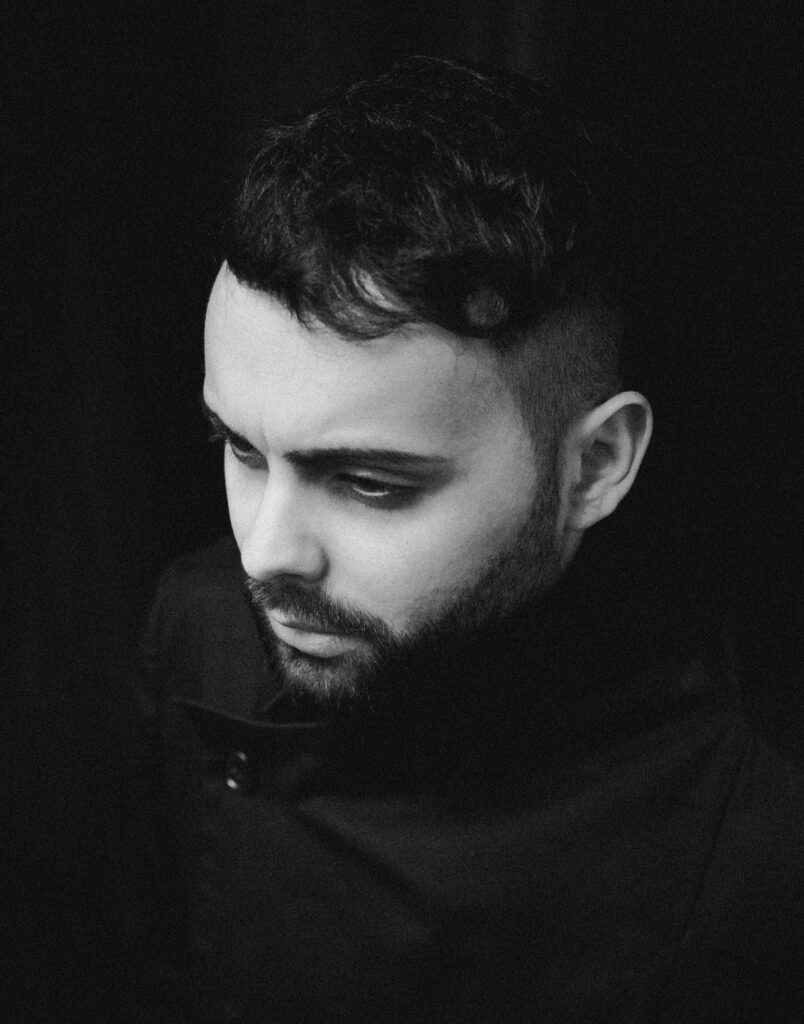
Tra i tuoi prossimi progetti ci sarà un Ep su Mitsubasa, label techno fondata nel 2019. Puoi anticiparci qualcosa di questo nuovo lavoro SLV?
Sì, sono entusiasta di annunciare che sto lavorando a un EP per Mitsubasa. Seguo Florian e Kristian da un pò, ammirando i loro progetti UtroIT e K.O.S. Una sera, ho inviato loro alcune demo e, dopo poche ore, eravamo già in contatto. Nei giorni successivi, abbiamo concluso un EP che uscirà nel 2025 sia in vinile che in digitale.
Sei tra i resident di Phase 2, party della tua regione che si è distinto negli anni per la capacità di portare numerosi artisti techno provenienti da background differenti creando una vera e propria community attorno al proprio. Che esperienza è per te e in che modo questa community ti stimola come dj?
Essere resident di Phase 2 è un’esperienza incredibile, la sento casa mia. Insieme a tutti i ragazzi, abbiamo condiviso un percorso significativo. Vittorio e Gabriele (fondatori di Seedj), sono due giovani talenti a cui il grande capo Giuseppe (Fiolo) ha dato da sempre grande fiducia, e questo è un segno di quanto crediamo tutti nel potenziale della scena locale.La capacità di Phase 2 di portare artisti provenienti da diversi background ha arricchito notevolmente la nostra community.
Suonare accanto a talenti così vari mi stimola costantemente e il supporto e l’energia del pubblico, insieme all’amicizia e alla passione condivisa con i miei colleghi, mi spingono a dare il massimo e a sperimentare. Questo scambio reciproco di idee e passioni rende ogni evento speciale e stimolante, aiutandomi a crescere sia artisticamente che personalmente.
Ultima domanda. Quali sono i progetti futuri di SLV?
Oltre all’EP in uscita per Mitsubasa nel 2025, parteciperò a un Various Artist di BCCO ed ho altre release importanti in arrivo, tra cui una traccia per Emerald Records insieme ad altre che non posso ancora annunciare al momento. Sto tornando a lavorare sulle nuove date invernali dopo un periodo di fermo.Continuo a sviluppare nuove idee musicali e a sperimentare su diversi generi, cercando sempre di mantenere la mia identità artistica. Sono molto motivato e non vedo l’ora di condividere tutto questo con il mio pubblico, continuando a crescere ed evolvermi come artista.Vorrei ringraziare Martina e Parkett per questa intervista e per il costante supporto. È sempre un piacere condividere il mio percorso artistico e le mie idee con voi. Grazie!
Grazie a te SLV!
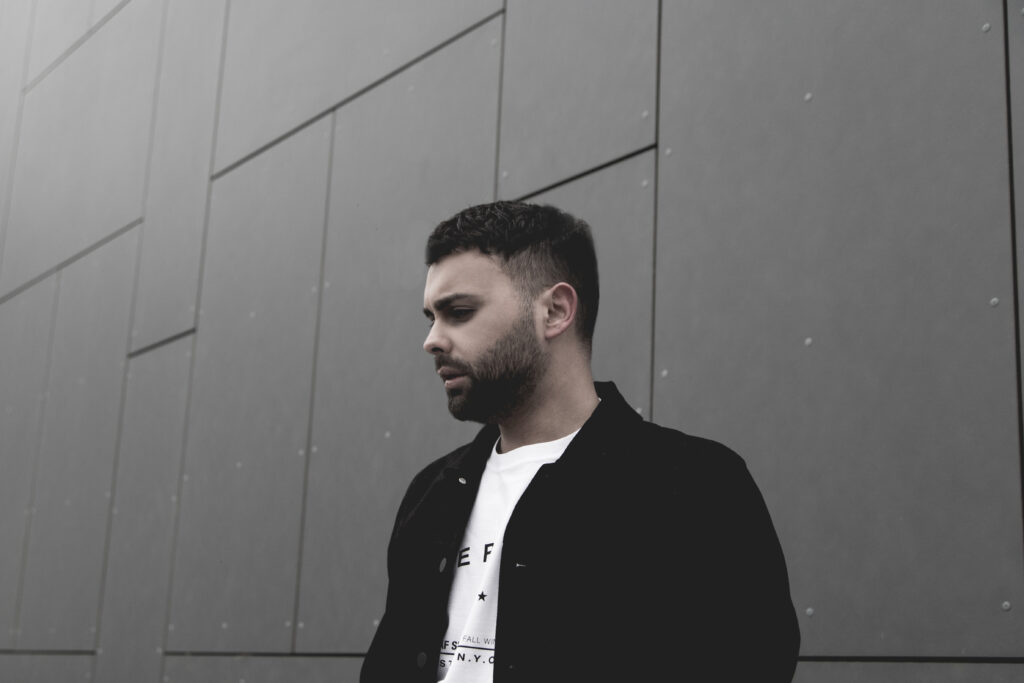
ENGLISH VERSION
SLV: the infinite souls of techno in “Night Echoes” – The interview.
SLV, aka Salvo Castelli, returns to Mutual Rytm with “Night Echoes”. After being one of the protagonists of the latest Various Artist “Federation of Rytm III“, the DJ born in Sicily but raised artistically in Berlin continues to trace his artistic evolution.
It does so through a thrilling EP: a true treatise on the infinite variations of techno, combining past and present, analogue and digital sound, old school and contemporary sound through a refined technique and a strong artistic sensitivity. SLV is the demonstration of how much Techno is an attitude: “Night Echoes” is a masterful performance by Soma’s pupil, who carves out hope in a scenario increasingly crowded with copies and homologation.
We wanted to hear about the inspiration and hard work behind such a well-conceived EP, reflect on the evolution of the modern electronic scene and the crisis of Aslice, explain his work as always manager and his experience as Resident for the Phase 2 party A 360 degree interview on an artist capable of interpreting Techno music in its countless and fascinating nuances. Happy reading!
Hi SLV, welcome back to Parkett. I would like to start by asking you how you are doing and what has 2024 represented for you so far?
Hello and thank you very much for the invitation! It’s always a pleasure to return to Parkett. I’m fine, I’m in a good moment both personally and professionally. 2024, so far, has been a year of great growth for me. I had the opportunity to explore new artistic directions, consolidate some collaborations and work on projects that allowed me to express sides of myself that I hadn’t yet shared. It was a year full of creative stimuli, challenges and satisfactions.
Several years have passed since the last time you were our guest and without a doubt your artistic journey has been enriched with new experiences. In what way do you feel you have matured as an artist compared to the past?
Well, certainly. First of all, I got to know myself and my creative process better. If in the past I focused more on experimentation, now I feel more aware of the choices I make, both sonically and visually. Furthermore, I have been lucky enough to collaborate with artists and professionals who have opened me to new perspectives, which have stimulated to refine my artistic vision and explore new territories. I believe I have acquired greater technical mastery, but above all an emotional maturity that allows me to better express what is inside me. Today, every project has a deeper meaning for me and this pushes me to be more attentive to my way of communicating, through my art, with the public.
One of your great skills as a producer and DJ is undoubtedly a strong expressive versatility, which has allowed you to express yourself in a distinctive way on different sound fields: from ambient techno to more industrial sounds. What does artistic versatility represent for SLV and how can one manage to be musically versatile while maintaining one’s well-defined artistic identity?
Thanks for your words! For me, artistic versatility is fundamental: it is what allows me to explore different sonic territories without feeling trapped in a single style. I believe that the ability to move between genres, such as ambient techno and industrial sounds, is essential to keep creativity alive and continue to evolve. And I do this while maintaining my artistic identity, because I have found my “conduct”, the my footprint.
In my approach, there are recurring elements, both in terms of atmospheres and sound aesthetics, which represent and distinguish me. It’s as if every project I create, regardless of genre, is part of a larger, ever-evolving story. Being versatile doesn’t mean completely changing shape or identity, rather enriching who you are with new nuances and influences, while maintaining an artistic coherence that the public can recognize.
Your next EP “Night Echoes” will be released on Mutual Rytm, the label that hosted your track “Liminal Space” in February, in a Various Artist together with Blawan, Dax J and Z.I.P.P.O. How did the relationship with SHDW begin and why did you think the label could be the right home for this artistic project?
I’ve known Marco SHDW for many years and I’ve always appreciated the musical style he proposed on Mutual Rytm, which coincided with what I was working on too. After participating in February’s Various Artist with the track “Liminal Space”, I decided to send him more music and work on a full EP. MutualRytm seemed like the perfect choice for “Night Echoes”, as it reflects my artistic vision and offers an ideal space to express my sound.
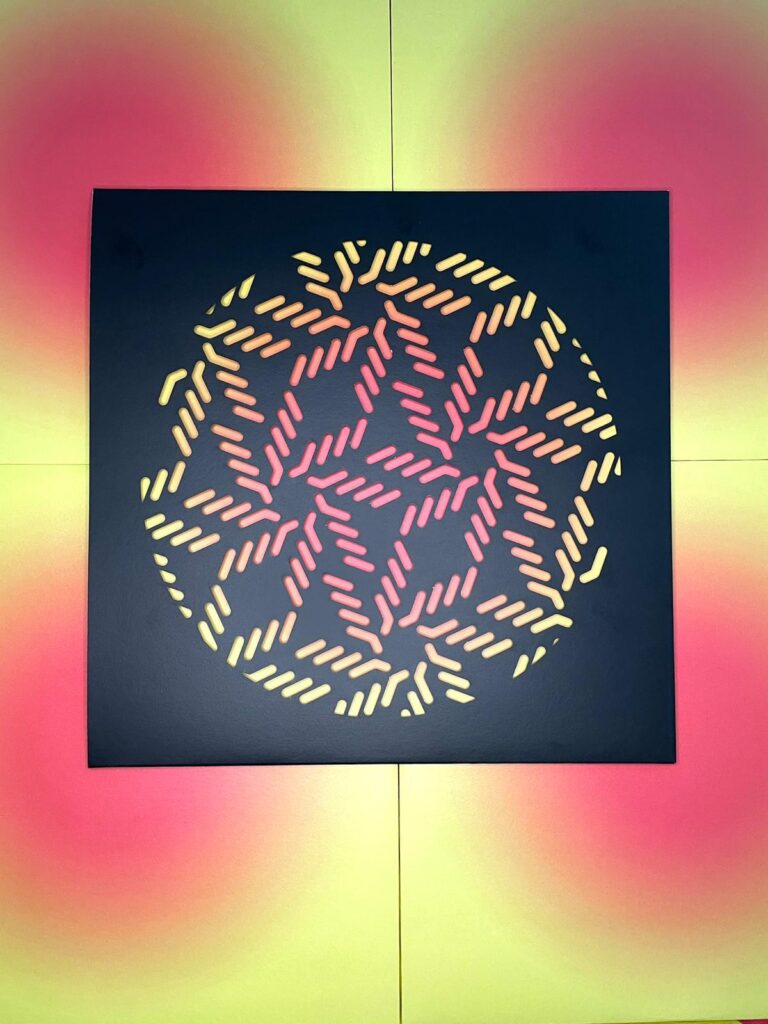
In “Night Echoes” the listener is immersed in a complete journey into your sound, which is expressed in the most different nuances. In the era of musical immediacy, how important is it to conceive a work as an album in which to paint your own sound and what kind of commitment and work in the studio does it require?
Conceiving a project like “Night Echoes” requires a different, more thoughtful approach. For me, it is essential to create something that goes beyond the single song. A work that tells a complete story and allows the listener to immerse themselves deeply in my sound world. An EP or album offers the space needed to explore all the nuances of your sound, without having to limit yourself to expressing everything in a few minutes.
The studio work for such a project is very intense. Each track must find its place in the internal to the general story, maintaining coherence but also offering variations that keep the listener’s attention alive. It requires a balance between experimentation and structure. Also time dedicated to finding the right sounds, atmospheres and the overall flow of the project. “Night Echoes” is the result of this process, a sonic journey resulting from so much dedication.
The EP begins with a more raw and straightforward idea of techno and then, in tracks like “Void” and “Elastik Pho”, draws more inspiration from the old school Detroit sound. How much is the heritage of Detroit techno part of your sonic background and how do you manage to give contemporaneity to this sound without falling back into stylistic quotations?
Detroit’s techno heritage is a key part of my sonic background. Its ability to express emotions and tell stories through sounds has always fascinated me. To update this sound, I reinterpret classic elements with new ideas and technologies. It’s crucial tò going beyond the simple reproduction of traditional sounds, creating a bridge between the past and the present. Tracks like “Void” and “Elastik Pho” reflect this approach, mixing the essence of techno with sonic innovations that make everything fresh and current.
The track that closes the EP “Persistence of Memory” closes the circle by reconnecting to the beginning of the EP but enriching the harder sounds of the first tracks with a dub techno style and glitch elements. What kind of work did you do with the synthesizers and samples to create a sound texture that enhanced both the rhythmic part and the sounds?
In “Persistence of Memory” I used different synthesizers, one in particular, the Pro3 by Prophet, to build a rich sound texture, exploring different modulations and timbres. Furthermore, I worked with samples to enrich the rhythmic part, maintaining a balance between the various elements. The result is a track that closes the EP in a complex and immersive way, inviting the listener to reflect on my musical universe.
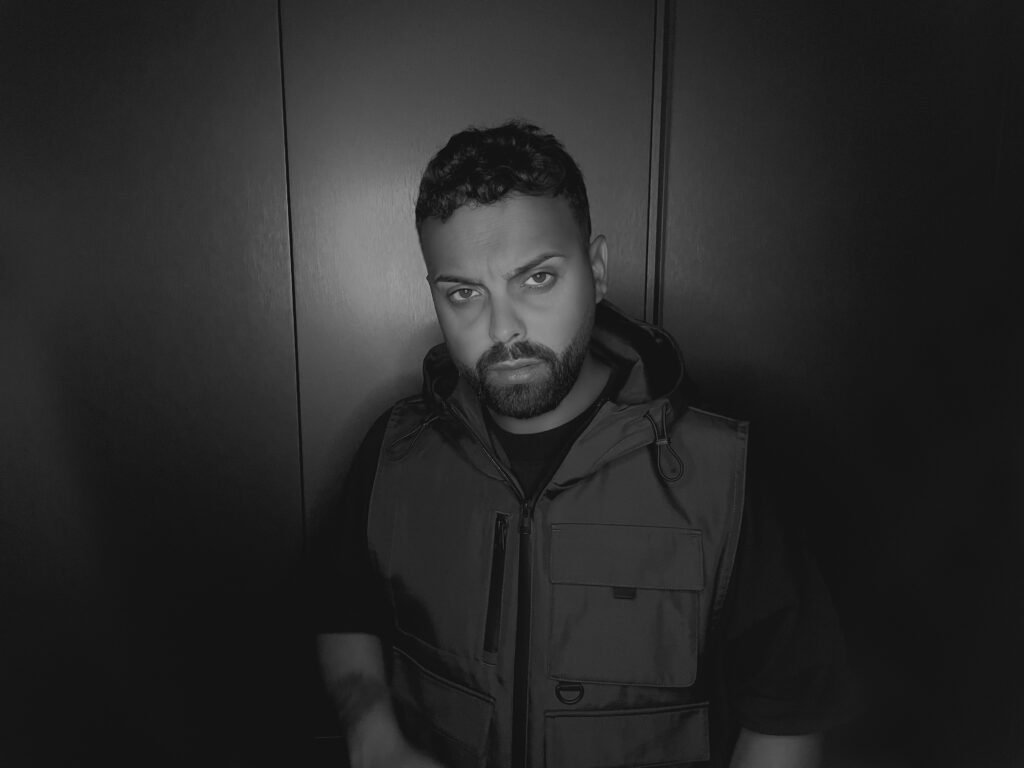
Lately we are witnessing a saturation of the hard techno scene, with a commercialization of this musical genre. Do you think that today the techno scene is taking on mainstream characteristics and what are, in your opinion, the risks of this current evolution?
Yes, it’s undeniable that the techno scene, and hard techno in particular, is becoming more and more mainstream. This evolution has led to greater visibility and a larger audience, which can be positive, but also carries the risk of losing the authenticity of the genre. The more commercialized music becomes, the more there is a risk that sounds and experiences will be standardized, thus losing the diversity and innovation that characterized techno in the past.
Furthermore, this can lead to a saturation of similar productions. A scenario in which artistic quality is sacrificed in favor of more marketable formulas. Another aspect to consider is how this commercialization can influence the live and clubbing experience. Techno is traditionally linked to underground spaces and a sense of community, its evolution towards the mainstream may reduce its ability to create an authentic and immersive environment.
However, I also believe that there are artists and producers who will continue to push the boundaries of genre, keeping innovation and authenticity alive. The challenge will be to find a balance between accessibility and preserving the essence of techno.
The closure of Aslice was another issue that reflects on the disparity between young producers and established artists, who have often not tolerated the platform. What was your relationship with the platform and how can the electronic community find new ways to support underground artists in your opinion?
I have found the Aslice platform to be a space to express my music and connect with other artists and enthusiasts, but I recognize that there is a disparity between young producers and established artists. To support underground artists, the electronic community could adopt several strategies. Firstly, it is essential to create spaces and opportunities for new voices, such as live events, showcases and festivals dedicated to emerging artists.
These events not only give visibility to artists, but also the possibility of building a network of contacts and collaborations. Furthermore , promotion through digital platforms and social media can be a great ally. Supporting young artists by sharing their music and creating an active online community can help make them emerge, as we have already been doing for a few years with our Seedj platform. Finally, the importance of feedback and mutual support cannot be underestimated. Established producers should consider offering mentorship and support to new artists, sharing their experience and knowledge. This way, we can work together to keep innovation and diversity alive in the electronic scene.
In addition to your artistic activity as a DJ, you work as a sample manager for the Seedj platform and have created sample packages for important companies such as Soma. What contribution does this type of work give to your career and do you intend to bring your experience in this field to new platforms?
It certainly has a significant impact on my career. These experiences allow me to deepen my understanding of sounds and textures, enriching my artistic background and improving my production skills. Creating sample packs has also taught me the importance of quality and versatility, which are essential for a producer. Currently, I am collaborating with Florian Meindl‘s Riemann Kollektion, where I am releasing my own sample packs, which allows me to explore new sounds and share my sound with other artists.
I am then involved in the 4four project with Splice, where I produce sounds that can be used by other artists. In the future, I intend to bring my experience in this field also to new platforms, continuing to work on projects that combine my passion for music with the production of high quality sounds. This approach not only enriches my career, but can also help support other artists in their creative journey.
Berlin represents for you the place of inspiration par excellence, where your sound evolved and formed. But is Berlin still the “Place to be” for an artist today?
Berlin has certainly been a key place of inspiration for my music, and its impact on my sound is tangible. The city is a crossroads of cultures, sounds and ideas, and has a vibrant music scene that has contributed to my artistic growth. However, today Berlin is facing some challenges. The increasing commercialization of the scene and rising costs of living can make it difficult for emerging artists to find their place.
Nonetheless, it remains a highly valued creative hub, attracting talent from around the world. While other cities are emerging as new creative hubs, Berlin continues to be a “Place to be” for artists, especially for those seeking inspiration and a supportive community. The key is to remain open and willing to explore new opportunities, both inside and outside Berlin. The music scene is constantly evolving, and there are always spaces where innovation and authenticity can thrive.
Among your next projects there will be an EP on Mitsubasa, a techno label founded in 2019. SLV, can you tell us something about this new work?
Yes, I’m excited to announce that I’m working on an EP for Mitsubasa. I’ve been following Florian and Kristian for a while, admiring their projects UtroIT and K.O.S. One evening, I sent them some demos and, after a few hours, we were already in contact. In the following days, we finished an EP that will be released in 2025 both on vinyl and digitally.
You are among the residents of Phase 2, a party in your region that has stood out over the years for its ability to bring numerous techno artists from different backgrounds, creating a real community around its own. What is the experience like for you and how does this community stimulate you as a DJ?
Being a resident of Phase 2 is an incredible experience, it feels like my home. Together with all the kids, we shared a significant journey. Vittorio and Gabriele (founders of Seedj), are two young talents in whom the great boss Giuseppe (Fiolo) has always placed great trust, and this is a sign of how much we all believe in the potential of the local scene. Phase 2’s ability to Bringing artists from diverse backgrounds has greatly enriched our community.
Playing alongside such diverse talents constantly energizes me. The support and energy of the audience, along with the friendship and passion shared with my colleagues, push me to give my all. maximum and to experiment. This mutual exchange of ideas and passions makes every event special and stimulating. It helps me grow both artistically and personally.
Last question. What are SLV’s future plans?
Besides the EP coming out on Mitsubasa in 2025, i’ll take part in a Various Artist on BCCO and I have other major releases, for example a track for Emerald Records amd others that I can’t announce yet at the moment. I’m returning to work on the new winter dates after a period of downtime. I continue to develop new musical ideas and experiment with different genres, always trying to maintain my artistic identity. I am very motivated. I can’t wait to share this with my audience, continuing to grow and evolve as an artist. I would like to thank Martina and Parkett for this interview and for the constant support. It is always a pleasure to share my artistic journey and my ideas with you. Thank you!
